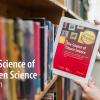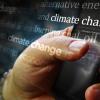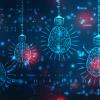
Citizen science is increasingly incorporated in research projects, as it has proved extremely effective in many aspects of research from collecting data to verifying information from remote sensing data in the field. A new book on citizen science offers practical support for implementing projects and addresses emerging topics around citizen science and artificial intelligence.
The book "The Science of Citizen Science", to which more than 100 authors including Linda See and Dilek Fraisl from IIASA contributed, was published open access with Springer today. The publication is the product of four years of intensive exchange within a European research network on citizen science.
At the same time, it signals a beginning, as its curriculum-like structure gives universities and others the opportunity to reflect on both the substantive contributions to research and the societal benefit of citizen science. It offers practical support for implementing projects and also addresses emerging topics in citizen science and artificial intelligence.
"Citizen science has seen rapid growth over the last twenty years, with projects and initiatives emerging across many different domains. This book has brought together the views and perspectives of researchers and practitioners from the humanities to the natural sciences to address common, yet important issues related to the science of citizen science. It represents a real advance in both current knowledge and multidisciplinary collaboration in the field of citizen science," comments See, a senior researcher in the Novel Data Ecosystems for Sustainability research group at IIASA.
Citizen science means that people who are not employed as scientists can participate in research. Many people get involved in citizen science projects to increase their knowledge about animal and plant species, discover new galaxies, or verify information from remote sensing data in the field. Citizen scientists can be involved in several stages of the scientific process, from collecting data to being part of the entire process from beginning to end. Citizen science is also increasingly acknowledged on the political level – on the one hand, the scientific outcomes themselves are appreciated, and on the other, it supports increased scientific literacy. Citizen science therefore plays a role in national education offensives and also in European research and innovation policy.
The book covers all of these aspects and the strengths and barriers that are relevant to fulfill the many expectations of citizen science. It is a culmination of the work of the COST (Cooperation in Science and Technology in Europe) action – Citizen science to promote creativity, scientific literacy, and innovation throughout Europe.
The first part of the book discusses the contribution citizen science can make to the natural, cultural, and social sciences and what the framework conditions for this would be. This includes, for example, ethical aspects involving the handling of data and personal rights. Fraisl, a researcher also associated with the Novel Data Ecosystems for Sustainability research group at IIASA, contributed to a chapter on guidelines for citizen science, outlining the approach to classifying guidelines that she has developed with colleagues as part of the EU-Citizen Science Project.
“It was quite a challenging experience for us to develop quality criteria for resources on citizen science in a field that keeps growing so rapidly when we don’t even have an agreed definition of what citizen science is. However, this work was very much needed to understand “how to do citizen science” in the best way possible, so that it is more engaging and actionable to achieve better environmental and societal outcomes,” Fraisl explains.
The second part of the book deals with the social implications and design of the cooperation between professional – paid – researchers and the voluntary ones. On the one hand, attention is paid to the composition of citizen scientists, which often shows a bias towards highly educated participants, and suggestions are made on how inclusion and diversity can be increased. Civil society organizations play a not insignificant role in this process. With regard to the interface with politics, a distinction is made between policies – that is, the substantive scientific contributions of citizen science, politics as changing processes such as stakeholder engagement, and polity as institutional interactions such as the implementation of Responsible Research and Innovation (RRI) principles.
The third section presents and discusses practical instruments, including an overview of the various citizen science platforms in Europe. Last but not least, the book addresses the question of how citizen science can be evaluated – for the participants, for science, and for society as a whole.
The target audience for the book is the international citizen science community (scholars), practitioners, and especially universities. The publication should make it easier for academia to adopt individual parts into their curriculum, or perhaps even to establish courses or professorships for citizen science.
Weblinks:
Open Access Publication: The Science of Citizen Science by Springer
COST Action 15212: Citizen Science to promote creativity, scientific literacy, and innovation throughout Europe
Adapted from a press release prepared by the Natural History Museum Vienna.
News

27 June 2024
What can social media tell us about public views on climate change?

26 June 2024
BRICS perspectives on innovations in digital competition policy and practices

26 June 2024


